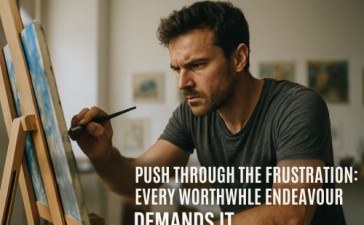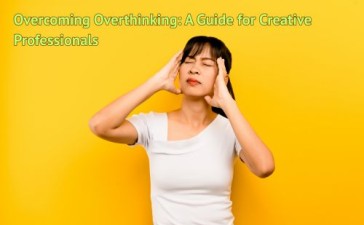In today’s digital age, it’s easier than ever to find courses, workshops, and coaching programs promising to help artists and designers build a thriving creative career. Social media is flooded with self-proclaimed “experts” teaching surface design, licensing, and art business strategies. But here’s the hard truth—many of these so-called teachers aren’t actually successful in the industry themselves. Instead of actively creating, licensing, or selling their own work, they make their money by selling courses to other artists.
For aspiring artists and designers, it’s crucial to recognize the difference between genuine mentorship and opportunistic coaching that offers little to no real value. Let’s unpack why so many creatives get lured into these programs, why the people selling them may not be qualified, and how to truly invest in your own growth without getting scammed.
The Rise of “Creative Coaches” Who Don’t Create
Many artists start their journey with a deep passion for their craft—painting, illustration, textile design, or photography. But at some point, some of them shift from practicing their art to teaching others how to “make it” in the industry. Now, there’s nothing wrong with teaching. But here’s the red flag: if someone is truly successful in surface design, licensing, or selling art, they likely don’t have time to run multiple courses, coaching groups, or endless webinars.
Think about it—successful artists are busy creating, collaborating with brands, handling client work, and growing their portfolio. Art licensing is a full-time commitment, requiring continuous submissions, negotiations, and relationship-building with licensors and manufacturers. If someone is genuinely successful in the field, their focus is on their creative work, not selling overpriced courses.
“They Teach, But They Don’t Do”
One of the biggest issues in this space is that many of these course creators don’t actually do what they teach. They may have taken a few online courses themselves, read some articles, or even dabbled in surface design, but they haven’t built a long-term, sustainable career from it. Instead, they realize there’s more money to be made in teaching others than in doing the work themselves.
This creates a cycle where new artists, eager to learn, end up spending hundreds or thousands of dollars on courses that don’t provide actionable, insider knowledge. The course sellers make a profit, but the students walk away with little more than vague advice and worksheets—nothing that actually moves the needle in their careers.
The Vulnerability Trap: How Artists Get Sucked In
Artists, especially those just starting out, are often vulnerable to these schemes. Why?
Desperation for guidance – The art and design industry can be confusing, with no clear roadmap to success. When someone offers a step-by-step system, it feels like a lifeline.
Fear of missing out (FOMO) – Many of these courses use high-pressure sales tactics, convincing artists that if they don’t sign up now, they’ll fall behind.
Success stories that aren’t real – Often, these “teachers” highlight students who found success, but when you dig deeper, the results are minimal or exaggerated.
Slick marketing and sales techniques – These people know exactly how to tap into an artist’s emotions, making them believe they need this course to achieve their dreams.
Unfortunately, many creatives only realize they’ve been misled after they’ve spent money on multiple courses and still feel stuck.
The Harsh Truth: You Can’t Do Everything
As a creative, you wear many hats—you create, market your work, network, and manage the business side of things. But you can’t do everything. If someone claims they can successfully run a creative business while also dedicating themselves to coaching, selling courses, and building multiple streams of income through teaching, something has to give.
No one can be an expert in everything. If they are truly making a living from their artwork, they wouldn’t have the time or need to teach. The best mentors and professionals in the industry are usually the ones too busy working in their field to constantly sell courses.
How to Identify Genuine Experts vs. Opportunistic Sellers
If you’re considering taking a course, workshop, or mentorship program, here’s how to determine if it’s worth your time and money:
Check their track record – Do they have real industry experience? Have they actually licensed or sold their work? Look for proof of collaborations, published work, or established industry connections.
Do they still actively create? – Are they currently working as an artist or designer, or have they shifted entirely to teaching? A true industry professional remains involved in their craft.
Do they provide real, actionable insights? – Good mentors don’t just talk about inspiration; they give concrete steps, insider knowledge, and proven strategies that have worked for them.
Are they transparent about their success? – If they claim they’ve had success in licensing, art sales, or other areas, ask for details. Who have they worked with? Where has their work been featured?
Is the course full of fluff? – If the program promises vague ideas about “believing in yourself” without practical, step-by-step guidance, it’s probably not worth your time.
Invest in Yourself Wisely
Instead of falling into the trap of overpriced, low-value courses, focus on real ways to grow your creative career:
Seek mentorship from working professionals – Connect with artists who are actively creating and have real industry experience.
Learn through real-world experience – Pitch your work, submit to licensing opportunities, and build relationships with brands.
Invest in quality, not quantity – One well-researched book, workshop, or mentorship session with a genuine expert is worth more than ten generic online courses.
Join industry groups and communities – Network with fellow artists and designers in professional forums where people share real insights.
Final Thoughts
The creative world is filled with opportunities, but it’s also full of people looking to take advantage of artists who are eager for guidance. Not all courses and workshops are bad, but before investing your time and money, ask yourself: is this person truly successful in the indu
Want to learn more?
- Find out more
- Launch Pad + Accelerator Expressions of Interest
- Selling and Licensing Your Art & Designs Around the World with ArtSHINE.
We’re here to help you to take action, just like we’ve helped thousands of other entrepreneurs, business owners, and creative professionals all around the globe.
Now is the time to let your passion SHINE.
Now is the time to Make Tomorrow Today!
To your success, Vinh Van Lam and Stuart Horrex Cofounders
ArtSHINE.com
stry, or are they just selling the dream without having lived it themselves?
At the end of the day, the best way to learn is by doing. Instead of buying into courses that promise overnight success, focus on honing your craft, building your portfolio, and taking real-world steps toward your creative goals. Success in the art world doesn’t come from quick-fix courses—it comes from persistence, strategy, and real-world experience.





